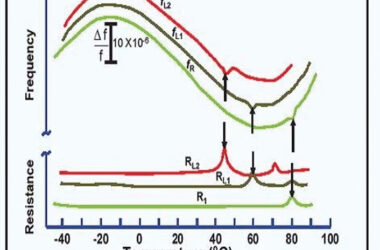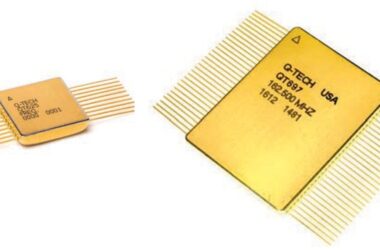Activity Dips and How to Avoid Them
Commercial grade quartz crystal oscillators can sometimes exhibit problems known as “activity dips” that occur only at very specific temperatures. If you never happen to operate at exactly the problem temperature, you will never see the problem. But what is an activity dip? It’s a relatively sudden increase in the crystal’s resistance, (a perturbation) in the quartz crystal’s series resistance and frequency characteristics over temperature. Generally, activity dips are caused by an interfering mode of vibration (coupled mode) in the quartz crystal. A coupled mode bleeds energy from the main mode if and when its frequency coincides with the frequency…


